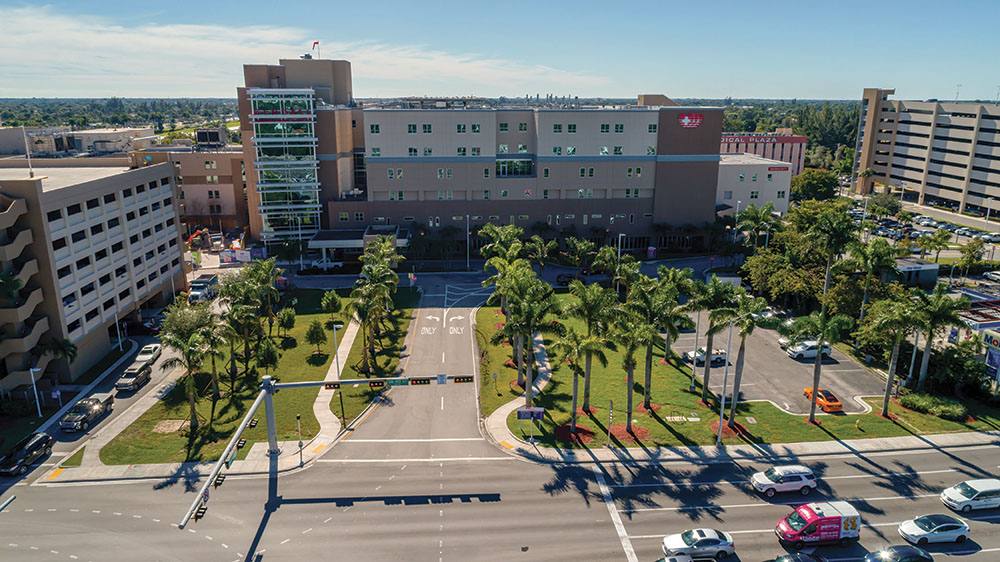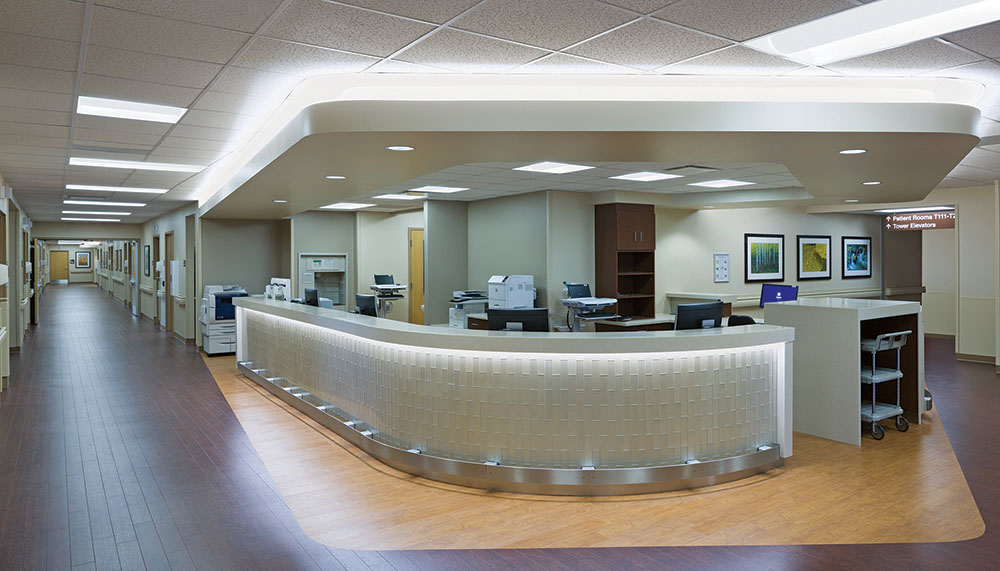Preventing the Spread: Upping the ante on infection control in healthcare construction
By Brandon Moore
Now more than a year into the pandemic, the healthcare construction industry is continuing its transition from reacting to adapting and innovating. One aspect of healthcare construction especially impacted by COVID-19 has been infection control.
From protocols and processes to the solutions themselves, healthcare construction professionals are closely evaluating ways to enhance infection control practices to protect hospitals’ staff and their vulnerable patients, which include the following considerations.
Enhancing indoor air quality
Similar to the attention given to preventing water intrusion during a project, COVID-19 has led construction firms to give more attention to control and mitigation of potential contaminants in the air. In general, this is leading to greater scrutiny of infection control plans and oversight. According to JE Dunn Project Manager Brian Hatvick, “All healthcare construction teams should regularly be asking themselves, ‘If an air particle contains something that could harm a patient, is there any way it could get through our ICRA (Infection Control Risk Assessment) containment? And how do we mitigate that risk?’”
To that end, “It wouldn’t surprise me if we start seeing stricter ranges for negative air pressure in our anterooms and construction spaces, more similar to the air quality standards for hospital clean rooms,” added Hatvick. Steps like this take airborne infection control to the next level, further protecting the rest of the hospital from air in construction areas.
Just as construction professionals are taking steps to improve indoor air quality, they are also further scrutinizing the air exhausted to the outside of the hospital.
“More frequent use, inspection and replacement of HEPA filters on all negative air machines — including those used to push air outside the hospital — help ensure even cleaner air intake for hospitals’ mechanical units, while also minimizing potential air pollution in the community overall,” said Hatvick.
Teams must also exercise greater caution about inadvertently transporting potential airborne contamination from workers’ clothing, PPE, hair and shoes via jobsite traffic. Particularly with demolition activities, teams must prevent workers from carrying dust and other contaminants when they leave a contained construction area. This is typically addressed by requiring workers to use HEPA-filtered vacuums on themselves and their clothing and exit on sticky mats to clean their shoes.
Teams should also consider taking additional measures, including consistently donning and doffing protective suits in anterooms, maintaining even cleaner anterooms and assigning someone to perform quality control of workers’ cleanliness in anterooms.
Enhanced cleaning and disinfection protocols
COVID-19 has also changed the way infection control is managed on floors, handles, walls and other high-touch surfaces. For one, these surfaces are being cleaned much more frequently than pre-pandemic. Secondly, bleach-based cleaners have become increasingly more important. This comes with a need to enhance safety protocols and understand the impact of cleaning on surfaces. “When increasing disinfection practices and using new cleaners, teams need to educate workers on product safety, including proper ventilation and limiting exposure to fumes,” said Hatvick.
Understanding which surfaces can tolerate certain cleaners and what frequency of disinfection they can accommodate is also important.
Impact of modularization
In the past, construction teams used plastic or built temporary walls using conventional construction methods, like metal stud framing and drywall, for infection control barriers. Fortunately, the construction industry’s general use of modular solutions has also led to enhanced infection control practices.
Now teams are taking advantage of temporary, modular wall systems and panels to efficiently contain construction areas and create more effective dust barriers. “For most scenarios, conventional construction methods are not optimal,” said JE Dunn Project Manager 2 Jake Siler. “Today’s modular systems are much more effective at creating infection control barriers, easier and quicker to install, easier to clean, reusable and can quickly be moved or changed as needed.”
Tried and true best practices:
Education & empathy
There are countless practices for maintaining infection control, so educating construction teams on the intricacies of working in a hospital is critical. Formalized, documented training and educational materials regarding infection control, designed specifically for the healthcare environment, are essential.
As standards and best practices evolve and change, firms must remain diligent about updating their healthcare training programs and materials, ensuring all workers have the latest information at their fingertips.
While education about protocols and tools is important, the qualitative, subjective side of infection control is just as important. “JE Dunn’s proprietary healthcare construction training program ensures everyone on the jobsite understands not just the ‘how’ of infection control, but also the ‘why,’” said Siler. Namely, leaders must ensure all team members understand what’s truly at stake during construction — potentially putting fragile patients like newborns, cancer patients or ICU patients at risk of increased illness or even death.
Flexibility, dynamic planning & ongoing communication
As conditions change inside or around a construction area, infection control measures need to change with them. That’s why project teams must remain flexible and recognize the importance of dynamic planning based on each project’s day-to-day needs. For example, creating awareness of changes in travel paths and movement of construction workers to and from contained construction areas ensures those surfaces are kept clean. This involves constant evaluation to ensure the correct plans, processes and resources, like cleaning supplies and PPE, are in place to maintain safety as things change.
Maintaining open lines of communication with the hospital regarding patient and staff movement, and other operational changes, is another tried and true infection control best practice. “The facility keeps us informed of changes on their end, just like we keep them informed of any changes to our construction plans. For example, with COVID-19, some hospitals have quickly designated new areas for COVID-19 patients or triage, entry and exit points, consequently requiring our construction teams to assess and change our infection control practices,” said Hatvick. “Things can change at a moment’s notice, so constant communication and collaboration between the owner and all partners is essential.”
Comprehensive process
Each hospital has different operations, as well as infection control processes and preferences, so infection control plans must be customized for each facility. They should fit the logistical and technical considerations of a jobsite, while also reflecting unique differences from one hospital to the next. While they are always founded on basic standards and best practices, comprehensive infection control plans must also be flexible with an emphasis on continuous improvement.
“With a customized plan, communication and partnership among all stakeholders and a commitment to constantly evaluating, improving and implementing best practices,” added Hatvick, “we can protect the well-being of all those within the hospital, which is our first and foremost responsibility.”
Author: Brandon Moore
Brandon Moore is a vice president at JE Dunn Construction.
Posted May 27, 2021
More Articles:
- CxA Workshop & Exam
Apr 29, 2024 – Apr 30, 2024 - EMP Seminar & Exam at CxEnergy 2024
Apr 29, 2024 – Apr 30, 2024 - CxEnergy
Apr 29, 2024 – May 2, 2024 - PHCC West 2024
Apr 29, 2024 – May 2, 2024 - Lean in Design Forum 2024
May 1, 2024 – May 2, 2024 - IFMA’s Facility Fusion Conference & Expo
May 5, 2024 – May 7, 2024 - ASHE Academy 2024
May 6, 2024 – May 10, 2024












